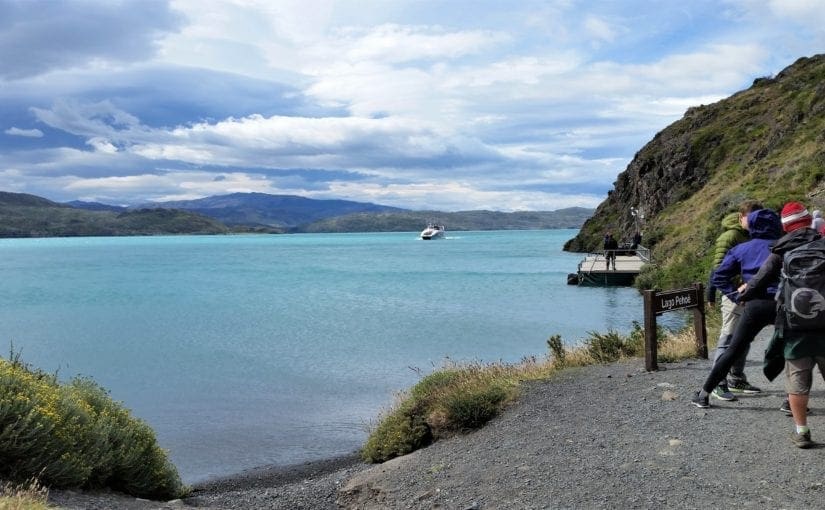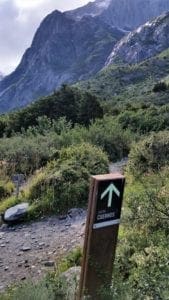Most recently updated January 18th, 2022
Estimated Reading Time: 9 minutes
Going for a hike in a park or Nature Reserve could be a solitary pursuit or an activity you engage in with other people (as on a group hike).
I’ve listed below some basic Hiking Etiquette 101. You should follow these simple rules of the trail to keep from being stalked by Rangers and irritating others on the trail.

I’ve also included some peeves that are my experienced-hiker version of “Get off my lawn!”
If these things annoy me they probably annoy other people too.
Some of my posts contain affiliate links. If you make a purchase through an affiliate link, I will receive a small payment at no additional cost to you. I do not get paid for recommendations, all opinions on this site are my own. See full Disclosure page here.
Before You Start The Hike
RSVP Cancelling and No-Shows
If you’ve RSVP’d to a hike on a Meetup like Raleigh Recreational Hikers, it is likely to have a maximum number of hikers allowed on the hike, with others put on a wait-list until someone drops out.
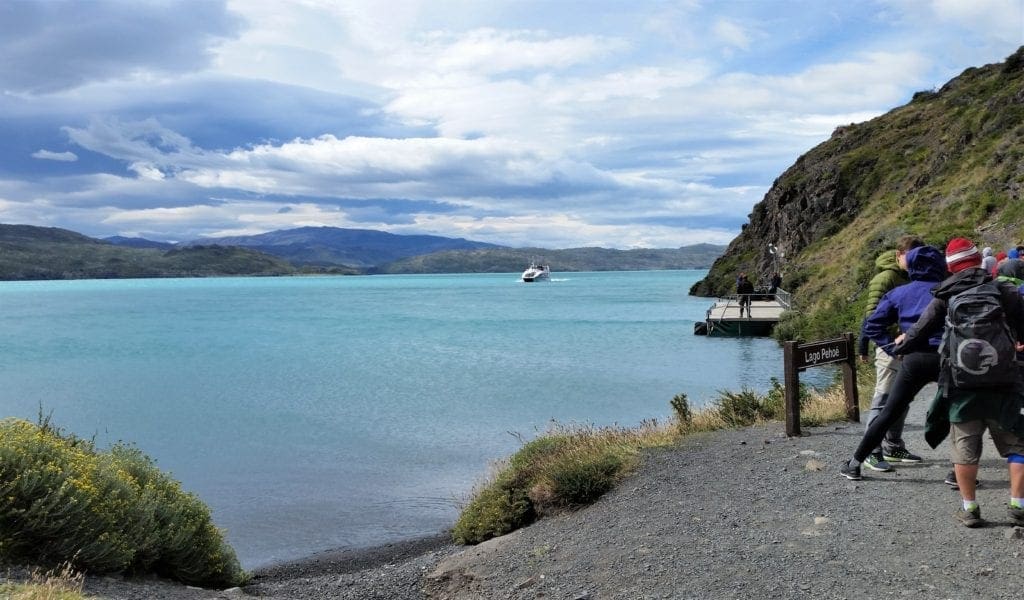
It’s good manners to cancel your RSVP ahead of time if you decide not to go, so someone else can take your spot.
If your plans change shortly before the hike, let the hike leader know so the group won’t be waiting for you.
Joining and Leaving the Hike
If you’re hiking solo, you can set your own timetable. If you’ve agreed to hike with others, please be there on time or even a few minutes ahead of the stated hike time.
If it’s my hike, and you arrive more than 5 mins late, we will be gone! (Each place has its own rules, and it’s your job to know what they are.)
If you decide to turn around or leave the hike in the middle, be sure to let the hike leader know or send word up the line.
This way the group will not waste time waiting for you at a break stop, or send someone back to “rescue” you for no reason.
Arriving Without Water or the Proper Gear
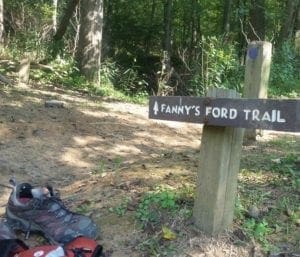
If you have done the research and read the hike description, you should be able to arrive dressed appropriately and carrying the proper amount of water.
It is potentially dangerous for you, and discourteous to other hikers (if you’re with a group) for you to ignore what is required for the hike.
For example, showing up in flip-flops with no water for a 6-mile trail hike in the heat of summer will probably be uncomfortable for you. (Yes, this has happened.) You may need to turn back and cut your hike short.
You should also pay attention to the pace that is stated in the hike description, and be sure you are fit enough to maintain it.
Pace is important to be able to estimate when you will return to the trail-head, and also what level of effort (exercise) you want to get.
In a group, if you are unable to keep the pace, someone will likely need to hang back with you to make sure you finish the hike safely.
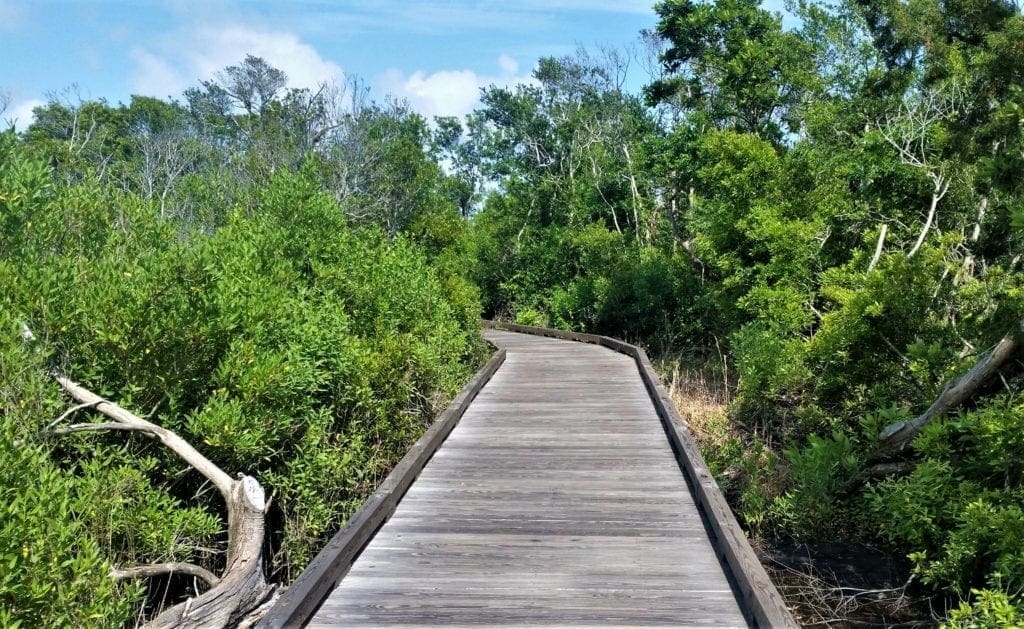
Depending on the hike, the leader may decide you cannot even start the hike if your footgear is not safe for the trail.
Follow Park Rules
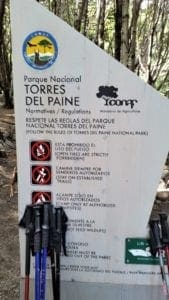
Unless you’re totally bushwacking off the grid, the place you’re hiking will have some rules to follow which are designed to preserve the park and keep visitors safe.
Each place is slightly different, but they usually have rules such as the below:
Leave No Trace, Take No Souvenirs
Essentially, “leave no trace” means that you don’t leave any sign of yourself in the forest.
Don’t litter, and pack out any used tissue or other garbage, and if you must poo (outside of a facility), bury it.
Likewise, “take no souvenirs” means that you should not collect rocks, plants, flowers or plant cuttings, or any animal life from the forest and take it home.

Dogs and Pets
Each park has it’s own preference on allowing pets. Some allow pets if they are on a short leash, others disallow any pets at all.
It’s up to the pet owner to know and follow the rules; sometimes you can get a hefty fine if you don’t.

I had a hiker who tried to get around the rules by putting his dog on a leash, but let the dog run free, dragging the leash behind him.
This will not fool a Ranger – you will still get fined if you are caught.
The trailing leash could also trip other hikers, or get snagged and choke your pet.

My List of Peeves
On the trail – common courtesy for everyone – Below are a few things that would seem obvious “don’ts” for hiking in a park, but unfortunately some people don’t seem aware.
- No “Trailgating” – “Trailgating” is hiking so closely behind someone that you’re trodding on their heels. This will make you very unpopular. Leave space between you and the person ahead of you; if they’re going too slowly for your pace, wait for an appropriate place on the trail and politely go around and get ahead of them.
- Smoking – It’s sad that we have to say this: Don’t smoke in the forest – no one but you wants to breathe the smoke and you could cause a fire.

Just one live ash can burn a forest down. - Loud music – Other people are not in the forest to listen to your music, no matter how awesome it is. We want to listen to the birds and the babbling brooks and the wind in the trees. If you must listen to music, use headphones.
Hiking with Children
Getting the whole family outdoors on the trail is a great, healthy family activity!
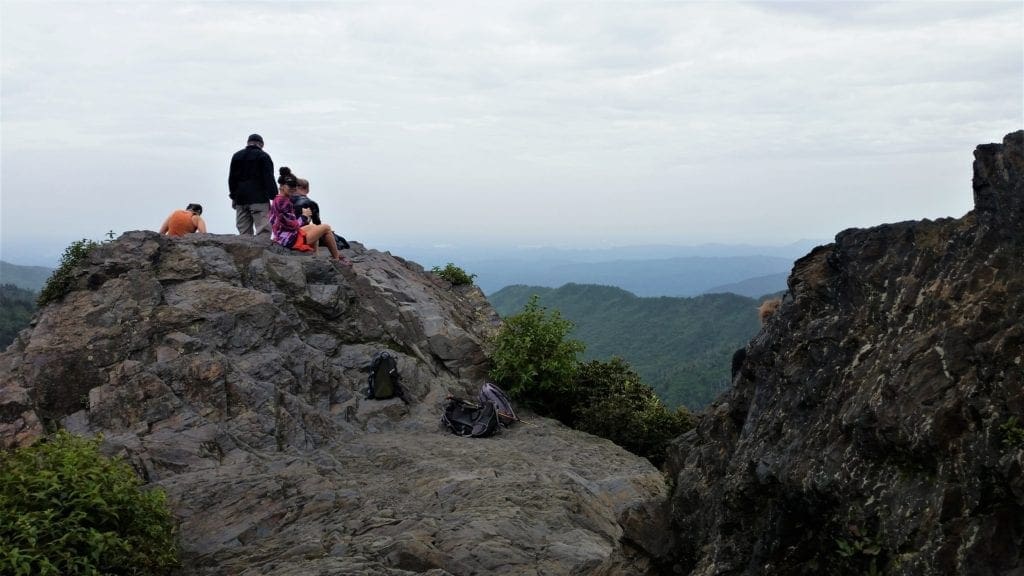
That said, here are a few things to avoid that will make the day more pleasant for you and the other hikers in the park:
- Sticks – Please don’t give your children big sticks, or let them acquire big sticks on the trail. They will hit each other, passing dogs, and other passing hikers. Just better to not do it.
- Casting stones, acorns, and pinecones – There will likely be tempting stones and other items on the trail that children love to throw. See above; people could be hurt. Don’t let them do it.
- No sugar please – We know what sugar does to children. If you have a choice, don’t feed them sugar before hiking – we don’t want to be there for the high or the crash. Also, being sticky on the trail will make them attract extra dirt and bugs.
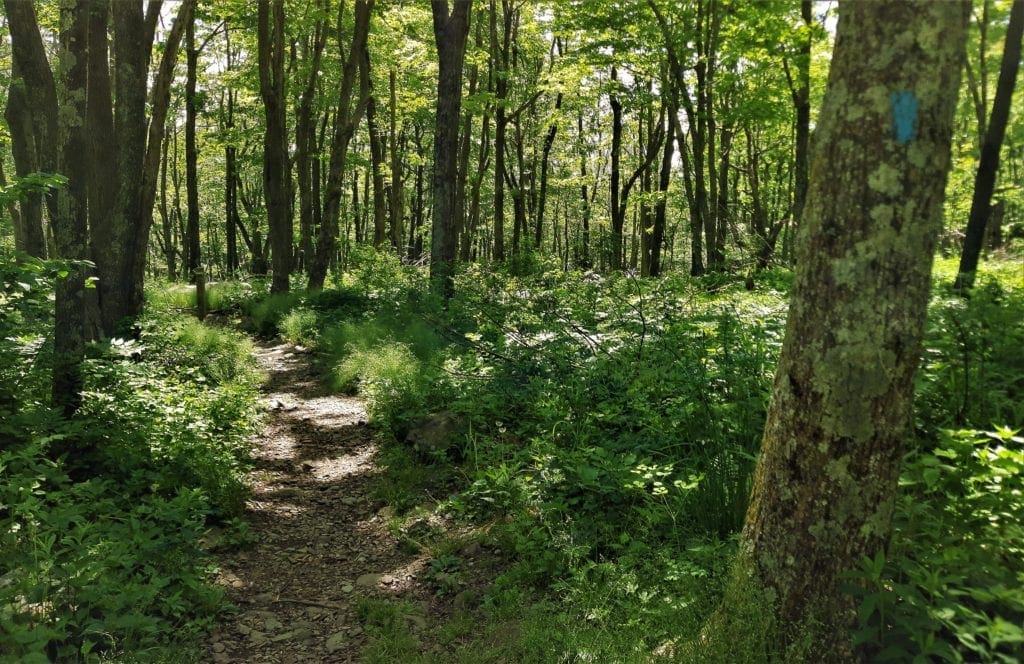
About the trail itself: Below are some common courtesies regarding the use of the trail.
- Passing on the trail – Generally, the rule is that people hiking uphill have the right-of-way. Also, if you are running or on a trail bike, you should call out “on your left!” or as appropriate as you approach a group of hikers. If you are a hiker coming up behind other slower hikers, you also would call out “on your left!” to indicate you wish to pass.
-
Cairns (stacked rocks)
Cairns (stacked rocks) can be used to mark a route, and should be built by people who know where the route should go. Building them randomly can cause hikers to go the wrong direction, which is annoying at best and dangerous at worst. And, well, if you’re on an established trail, it doesn’t need cairns.
- Walking side by side – Walking beside each other is fine as long as the trail was designed to be wide enough for that. If the trail is a single-track, don’t try to force it: someone will end up hiking on rougher terrain, possibly twisting ankle or eroding the trail.

Trail marker in Patagonia - Stay on the trail – Unless your hike is specifically an off-trail hike led by a Ranger, please stay on the marked trails. This is for your safety and the preservation of the park.
- Carrying Hiking Poles – Using hiking poles or not is a personal preference. I generally prefer not to, unless I am in very steep terrain – and even then I prefer to use only one pole. Other hikers swear by hiking poles and use them every time. That’s fine, as long as you remember to NOT kick the poles backwards beyond your own body, potentially stabbing people behind you OR stabbing people in front of you as you move forward.
No one wants to hike near someone who is overly exuberant, and too stabby with their hiking poles.
- Be Nice!
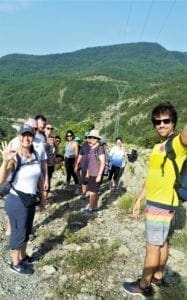
There are more and more people out hiking these days, and one of the best things we can do on the trail is just make eye contact, smile and be nice.
You could even say “Hi” 🙂
Peeves for Hiking in a Group
Last but not least, below are a couple of specific “don’ts” I recommend when hiking in a group.
- Running ahead of the hike leader – It’s bad form to do this, not only because there may be hazards coming up that could hurt you, but your irritated hike leader may decide to leave you behind if you get yourself lost. Seriously, if you go ahead of the Leader, you may not know which route she was planning to take and you will be on your own, or cause someone to have to go back and look for you.
- Going off-trail without telling anyone – sometimes Nature calls, and you must step off trail to deal with it. It is best to let someone know you are leaving, and also when you get back.
- Turning back without telling anyone – Similarly, if you decide you’re not into it or your ankle is bothering you and decide to turn back, please let the hike Leader know so they don’t have to stop the hike and search for you.
- Keep it light – Conversation on the trail is an enjoyable part of a group hike. To keep it that way, I believe it’s best to forgo serious topics like politics or religion until everyone is off the trail and has the option of stalking off in a huff if they are grievously offended. 🙂
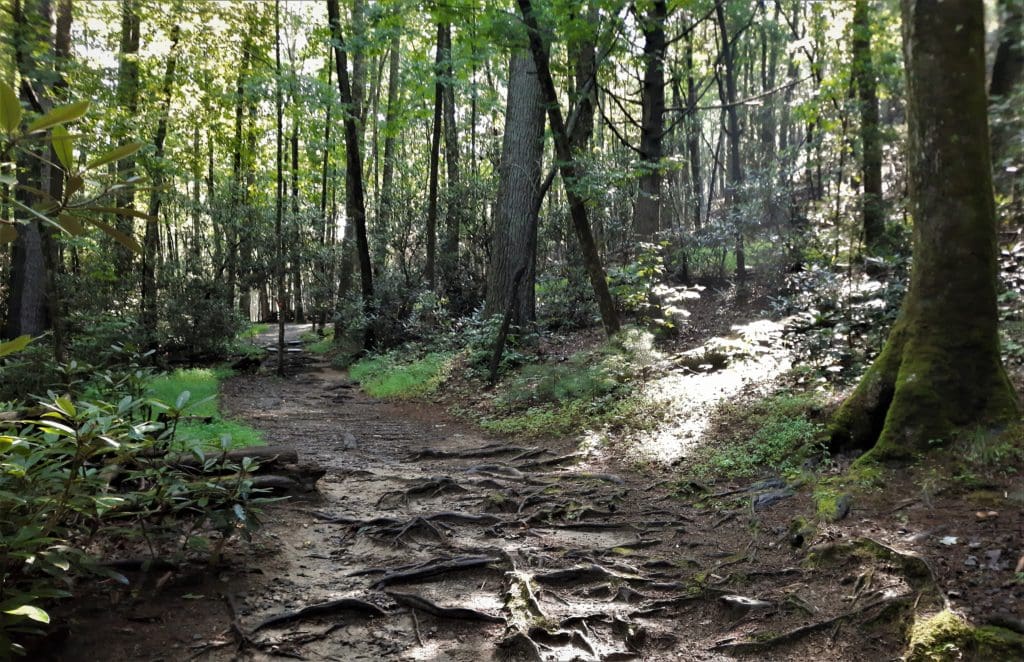
Please leave comments below and let me know what your experiences have been hiking, and if you have any additional peeves.
If you have any other questions or comments you can reach me at idratherwalblog@gmail.com and I’ll respond as quickly as I can.
Thanks for stopping by – see you next time! LJ
To Get New Idratherwalk Posts
sent directly to your inbox (how convenient!) Click this Button
If you enjoyed this post, please share it:
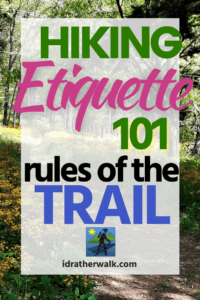
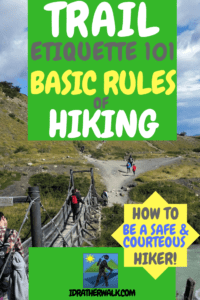
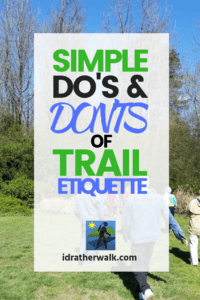

LJ has spent much of her free time as a single Mom – and now as an empty-nester – hiking in the US and around the world. She shares lessons learned from adventures both local and in exotic locations, and tips on how to be active with asthma, plus travel, gear, and hike planning advice for parents hiking with kids and beginners of all ages. Read more on the About page.

